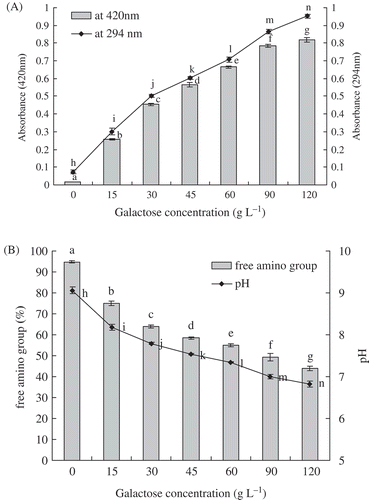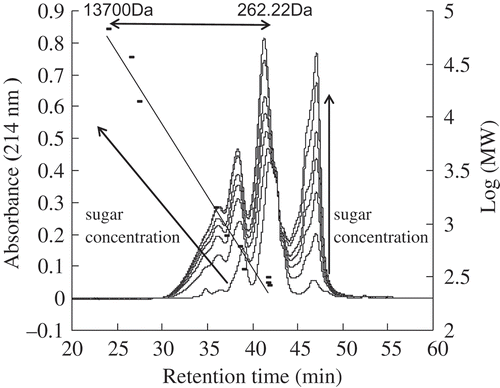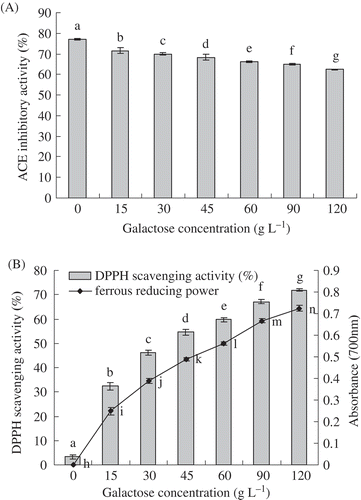Figures & data
FIGURE 1 A: Effects of galactose concentration on browning intensity and UV-absorbance at 294 nm of galactose-BCP MRPs during heat treatment at pH 9.0 and 95°C for up to 3 h; B: Effects of galactose concentration on free amino group and pH of galactose-BCP MRPs during heat treatment at pH 9.0 and 95°C for up to 3 h. Error bars represent the standard deviation of the mean of triplicate experiments. Values with different letters are significantly different (p < 0.05).

FIGURE 2 A: Effects of galactose concentration on fluorescence excitation (left) and fluorescence emission of galactose-BCP MRPs during heat treatment at pH 9.0 and 95°C for up to 3 h. Excitation wavelength for emission spectra was set to 347 nm and scanning wavelength range from 370 to 600 nm. Emission wavelength for excitation spectra was 425 nm and scanning wavelength range from 300 to 400 nm; B: Effects of galactose concentration on fluorescence intensity of galactose-BCP MRPs (excitation at 347 nm and emission at 425 nm).

FIGURE 3. Effects of galactose concentration on size exclusion chromatograms of galactose-BCP MRPs during heat treatment at pH 9.0 and 95°C for up to 3 h.

FIGURE 4. A: Effects of galactose concentration on ACE inhibitory activity of galactose-BCP MRPs during heat treatment at pH 9.0 and 95°C for up to 3 h; B: Effects of galactose concentration on DPPH radical scavenging activity and ferrous reducing power of galactose-BCP MRPs during heat treatment at pH 9.0 and 95°C for up to 3 h. Error bars represent the standard deviation of the mean of triplicate experiments. Values with different letters are significantly different (p < 0.05).

